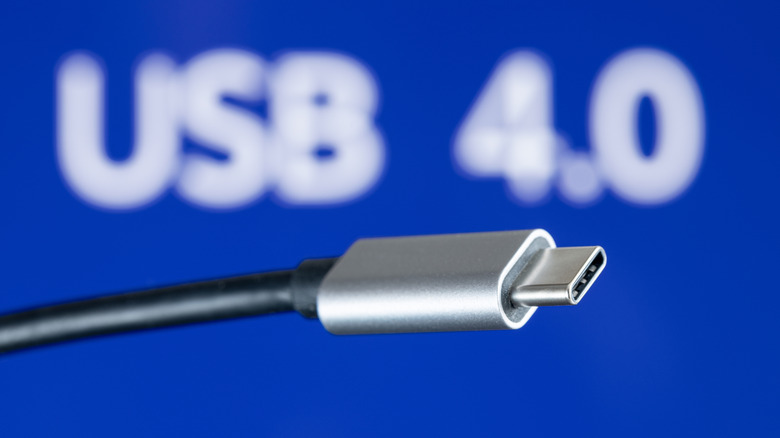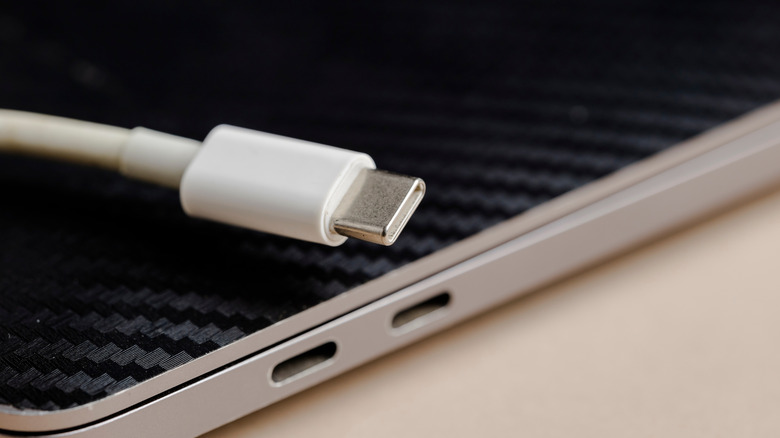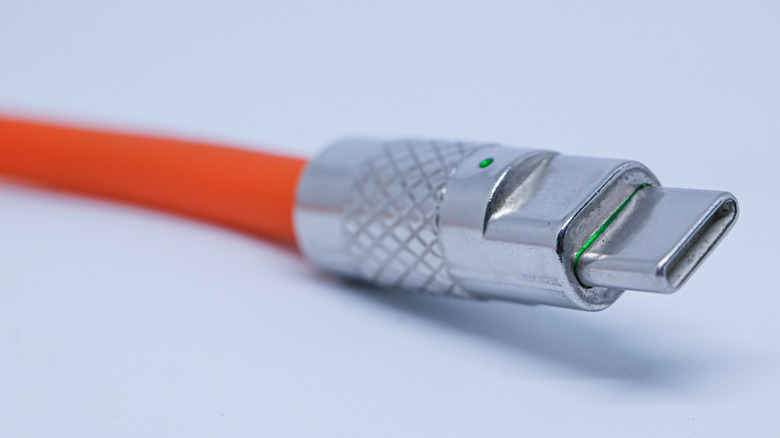The Difference Between USB4 And USB-C Fully Explained
Most people have a drawer or cabinet filled with USB cables for all the devices in their lives. Keeping track of which cable is which can be a nightmare, especially when it comes to USB cables with the Type-C connector. Anyone who has shopped around for new USB cables lately has undoubtedly seen cables that look the same, labelled both as USB Type-C and USB4.
While USB Type-C and USB4 may look interchangeable on a store's page, they're not. Type-C refers to the connector pin used, whereas USB4 uses the Type-C connector but refers to the technology standard of the cable, in particular, the cable's data transmission speeds and charging power. All USB cables have different technology standards, and USB4 is the most recent of these. USB4 utilizes the reversible Type-C connector popular in new smartphones, laptops, and other devices to deliver more power for quicker charging and faster data transmission speeds than previous generations of USB Type-C cables.
Multiple generations of USB Type-C connectors
Whether charging the newest iPhone 16e or the Motorola Razr, you're using a USB Type-C cable to plug into your smartphone. From laptops to game consoles, this small and reversible connector is capable of a lot; from charging to data transfer to even delivering 4K video.
While USB Type-C has become the go-to connector for many new devices, it's important to understand that the term "USB Type-C" only refers to the connector's physical design, not its performance. That sleek, reversible plug doesn't tell you how fast data can be transferred, nor how fast your device will charge. For example, some USB Type-C cables will only offer USB 2.0 speeds, which are quite slow by modern standards, while others may support USB high-speed data rates found in USB 3.2 or USB4.
Some USB Type-C cables are designed for charging only, meaning they don't support any form of data transfer. Others may support basic power delivery or fast charging that is suitable for laptops. One could enable high-speed charging and fast data transfer, while the other might charge slowly and offer no data capabilities. Understanding the difference between USB-C cable types is crucial when shopping for accessories that match your device's performance needs.
USB4 delivers better performance
Announced and released in 2019, USB4 is a high-performance technology standard that delivers a maximum speed of 40 Gbps data transfer alongside enhanced power delivery and support for Thunderbolt 3 devices. Remember, just because a device you own has a USB Type-C port, it doesn't mean you have USB4. You'll need to check your device's specifications to get the full speed and functionality of your USB Type-C ports.
If you do indeed have USB4, you'll enjoy the fastest data transfers over USB Type-C currently available, the ability to run multiple 4K monitors, and high-speed charging, all with a single connection. Additionally, the compatibility with Thunderbolt 3 means that you will be able to make use of high-powered storage devices and docks over USB Type-C. What's more, USB4 cables offer some of the fastest speeds on the market, and even faster USB4 cables are set to come out in the future. Charging and data transfer have never been easier.


